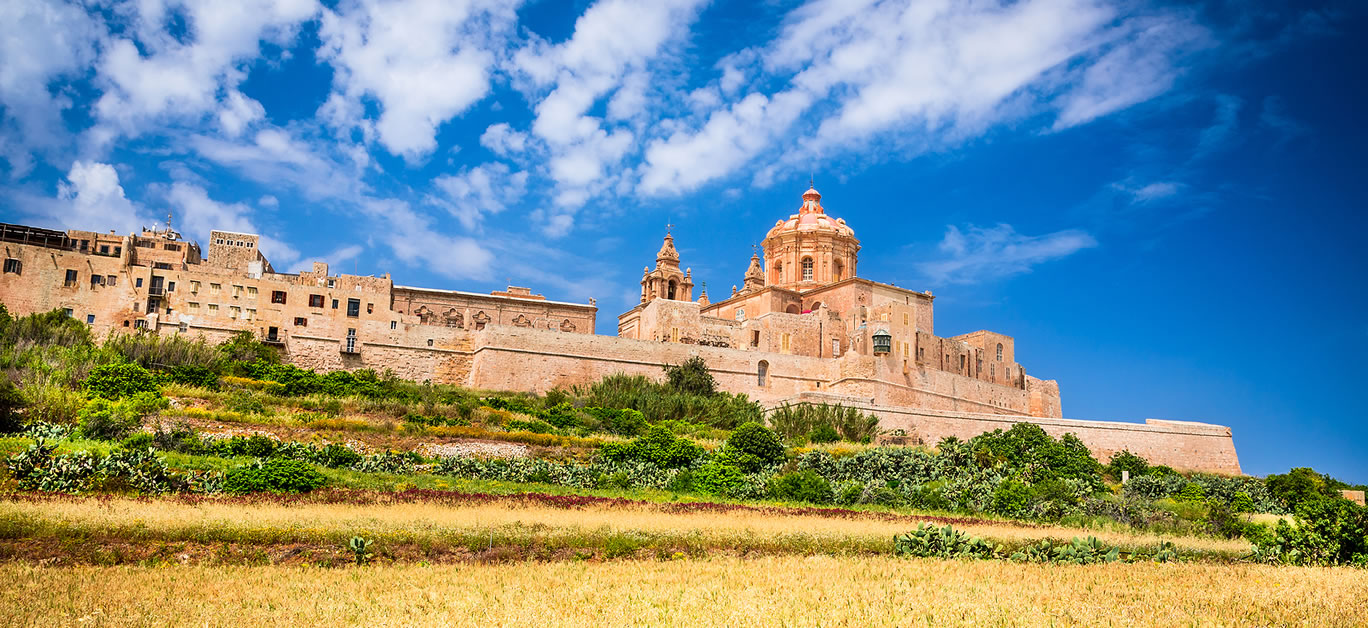Valletta might be the jewel in Malta’s well-walled crown, but the capital isn’t the only of the country’s pretty cities to boast luxurious accommodation, high-end gastronomy and to-die-for views. The ‘Silent City’ (and former capital) Mdina, is Malta’s other walled city and, though smaller, is arguably more perfectly formed, with (mostly) car-free, honey-coloured streets, medieval history and a pleasingly exclusive feel.
LLM travel writer Ally Wybrew takes a look at this Mediterranean gem’s best bits, from fascinating historic sites and lavish hotels to the very best culinary experiences.
Delve into ancient history
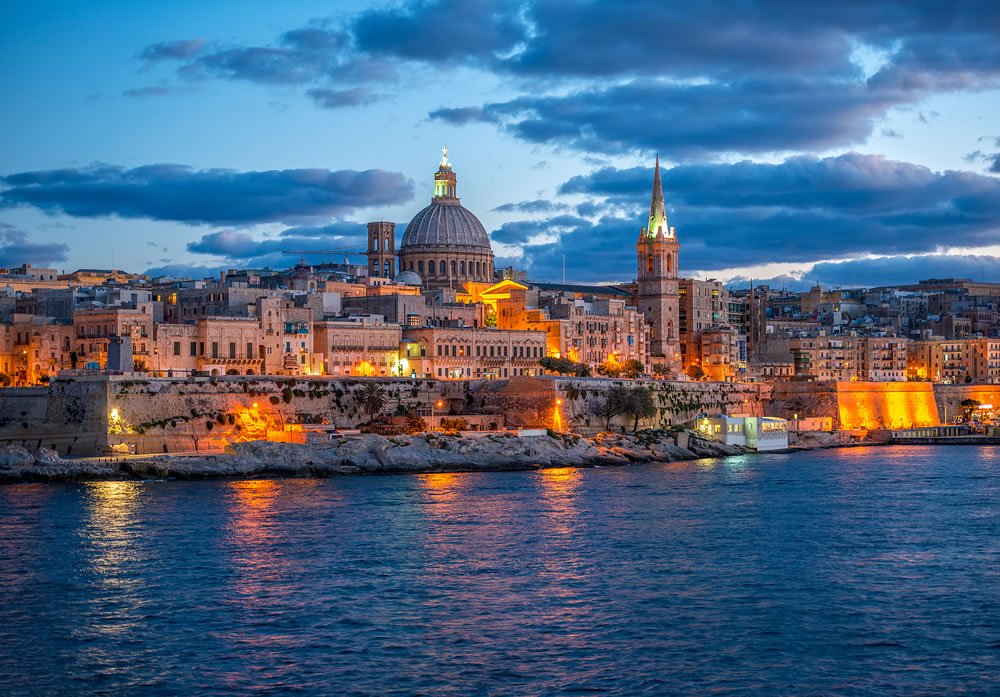
As with any Maltese locale, Mdina is brimming with all manner of ancient sites, and walking beneath the city’s age-old baroque gate is just the start. Once past the decorative archway, visitors are greeted by the unique tranquillity of Mdina. Only residents’ cars are allowed within the walls, so the city’s soundtrack is primarily soft footsteps and the susurration of visitors’ voices, occasionally broken by a bell toll.
Stop by the Torre dello Standardo watch towers. Built by the Order of St John in 1725, these stone signal-relaying systems are some of the most ornate on the island, featuring intricate detailing not seen on the more functional coastal towers. Head on to the Archbishop’s Palace (permanent residence of Malta’s Archbishop), then into the imposing St Paul’s Cathedral. St John’s Co-Cathedral in Valletta might sport a Caravaggio, but Mdina’s main religious monument boasts its own legendary artwork in the form of multiple Mattia Preti paintings.
When you’re finished with the awe-inspiring interiors, go straight on to the Cathedral Museum (located opposite the cathedral entrance) to immerse yourself in its extensive collection of artefacts including religious vestments, lithographs, copperplate prints, silverware and more.
Pop into any of Mdina’s other venerable attractions such as the Carmelite Church, Palazzo Falson House Historical Museum, Natural History Museum and the dungeons, then process it all with a walk around the serene ditch garden or along the bastion walls, which are the perfect place to take in views across the island.
Top tip:
In the unlikely event you run out of things to see in Mdina, there’s another city literally on the doorstep. Cross the road and head into Rabat, where intricate mosaics await in the first century Domus Romana (ruined Roman house), warren-like catacombs entice and some of the best pastizzi on the island waits to be tasted.
Where to stay
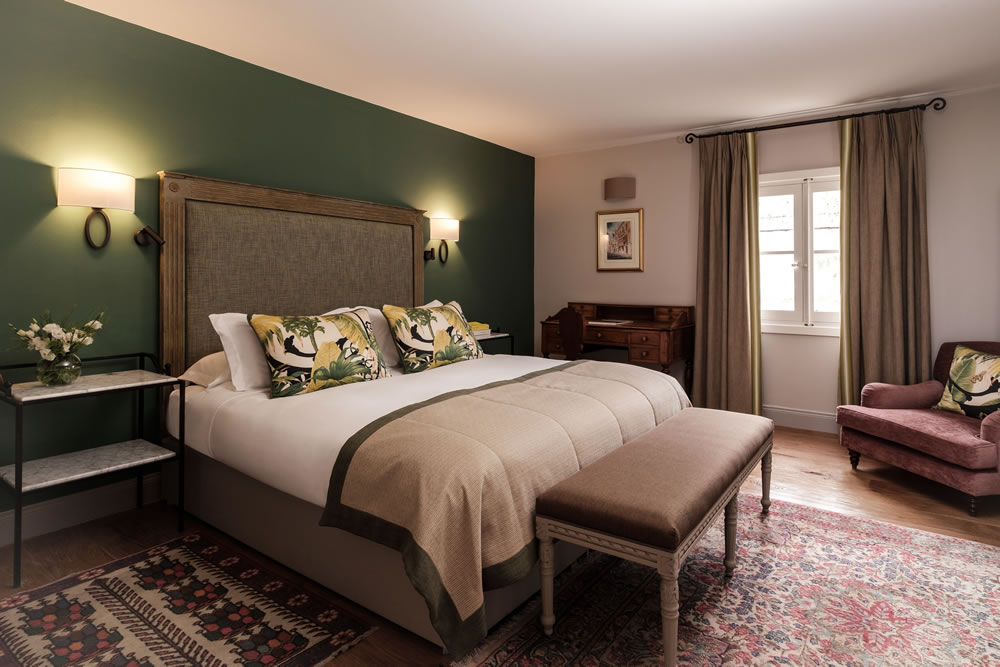
A host of hotels offer various levels of luxury in and around Mdina, but for those serious about their stay, the two five-star options within the storied walls are really the only choice. Palazzo Bifora offers modern-meets-classical-styled accommodations and a rooftop pool, but those seeking a truly authentic experience should opt for the Relais and Chateau prestige of The Xara Palace.
Integrated into Mdina’s bastion walls and once home to the noble family Moscati Parisio, this converted 17th-century palazzo is draped in bougainvillaea on the outside and a decadent mix of antique furniture, Parisian rugs and cool colour palettes on the inside.
Stone flagged floors, arching ceilings and a sun-speckled courtyard ooze calm, while rooms are almost ridiculously opulent: marble baths, thickly-woven curtains and tasteful prints frame windows proffering unrestricted views all the way to the ocean. What’s more, The Xara Palace houses the city’s only Michelin-starred restaurant – De Mondion, one of six such starred restaurants in the country.
Dining delicacies
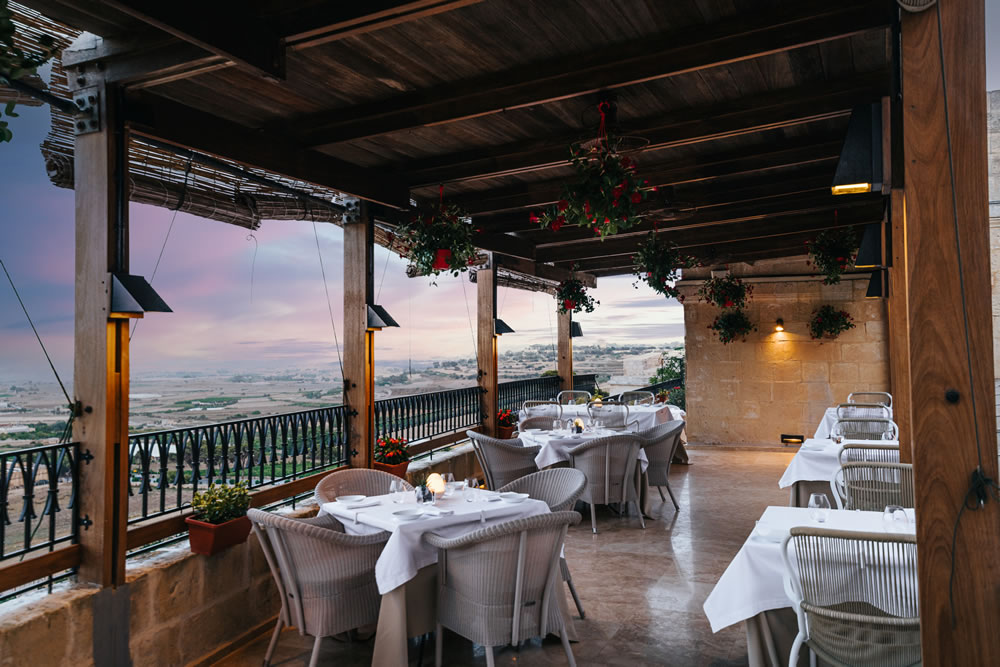
Though Mdina is modest in size, its dining options are plentiful – and excellent. Plus, thanks to its proximity to Rabat, visitors really are spoilt for choice.
The aforementioned De Mondion is a great place to start your culinary journey, having just renewed its Michelin star for the fourth consecutive year. Executive chef Clint Grech is all about local produce, planning his menus around the seasons and what produce local farmers can provide. According to the Mellieha-born chef, the barbecued rabbit, snail and suckling pig are the most popular dishes on his menu. In the summer, guests can dine al fresco on the bastion walls, soaking up the city’s subdued ambiance and oft firework-strewn skyline.
Converted 17th-century gunpowder magazine storage units create an atmospheric venue for Bacchus, an underground dining experience serving varied Mediterranean cuisine including veal medallions, seabass and lamb belly. Trattoria AD 1530 is another solid option, attached to the side of The Xara Palace; it serves great food in a more laid back environment. For a quick snack or thirst-quencher, try the Fontanella Tea Garden where, while the views might be what you’re paying for, the food and beverages don’t disappoint.
Top tip:
For oenophiles, Mdina offers a special chance to sample some of the country’s rarely exported wines. While most restaurants in the city offer a selection of local vino, it’s worth trying for an exclusive wine tasting at Ta’ Betta vineyards, just an eight-minute drive away. Tastings are exclusively for discerning visitors with a passion for wine, so be sure to call ahead.
Final thoughts
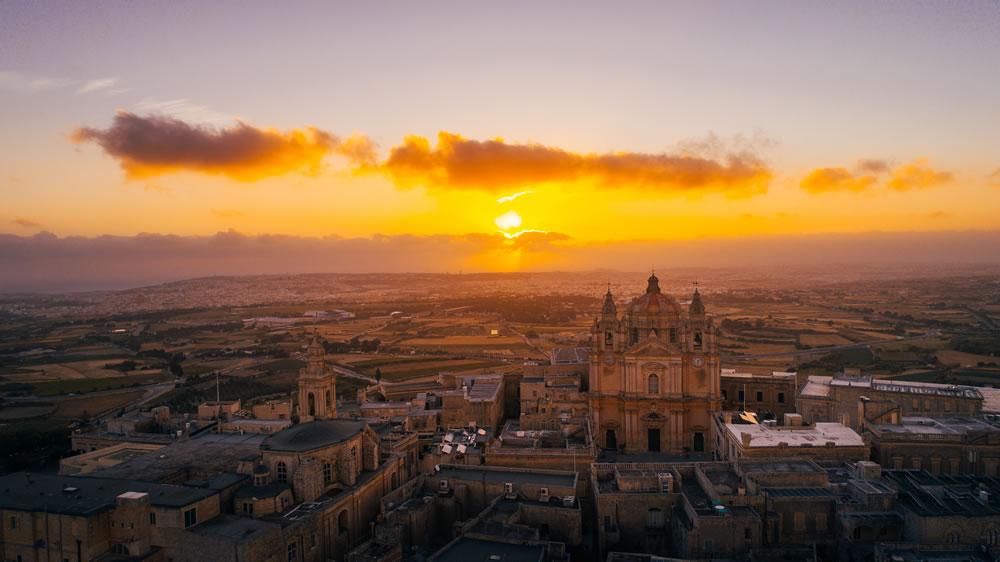
Mdina’s seductive charms make it easy to spend a luxurious long weekend wrapped within its welcoming walls. But as only one small part of a collection of islands overflowing with attractions (both above and below water), it’s worth exploring the country’s other offerings. The best way to do it? Charter a boat and sail the island’s coastline over to Gozo, mooring up near Fungus Rock to spend an afternoon marvelling at the geological wonders of the Blue Hole and Inland Sea, before stopping by the famous Blue Lagoon on Comino on the way back.












